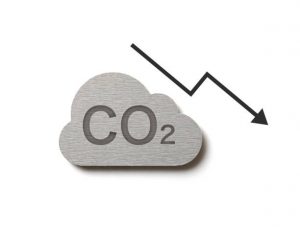Towards a new energy future
Almost a century after its establishment, Eskom is embarking on a process that will define its strategic trajectory and position the company for a new role within the broader South African energy landscape.
It is responding to unprecedented challenges in a highly regulated market that is undergoing fundamental reform in the context of South Africa’s energy security, decarbonisation and transformation agendas.
In the annual Integrated Report, Eskom Group CEO, Mr Andre de Ruyter, noted that the only sustainable way to ensure Eskom’s financial viability will be to recover efficient costs from the users of electricity. This will also attract and reward private investors in new generation capacity.
A comprehensive corporate plan introduced in 2021 sets out the key factors which will influence Eskom’s strategic trajectory:
- Reshaping Eskom’s business model and establishing an agile organisation that is able to respond to rapid changes.
- Creating an organisation that is committed to greater efficiencies.
- Cutting wasteful costs, optimising revenue, improving corporate governance and acting against corruption and mismanagement.
- Ensuring greater transparency in the governance of Eskom and its subsidiaries.
- Transitioning from the existing dependence on fossil fuels towards a mix of electricity energy sources.
- Embracing new trends in the global energy sector and introducing technology which will contribute towards higher levels of efficiency, reduced costs to consumers and a cleaner environment.
- Communicating more effectively with all stakeholders and foster productive partnerships with all spheres of government, partners, the business sectors, labour, communities and consumers.
- Accelerating a “Just Transition” towards a low carbon emission economy which strikes a balance between South Africa’s rich endowment of natural resources, the protection of growth and jobs and the adoption of cleaner processes. The Just Energy Transition will enable Eskom to attract funding to support the shift from fossil-based fuels to cleaner power generation, while managing the impact on the livelihoods of communities that are dependent on Eskom’s operations.
- Protecting jobs, retraining and re-skilling workers and creating new opportunities in the energy sector and the downstream value chains.
The turnaround strategy outlines a phased approach which will lead to the emergence of a new, viable Eskom. It is underpinned by three pillars which aims to “stabilise, optimise and grow” the business.All three pillars are put into action in tandem to ensure short-term opportunities are leveraged and risks are managed effectively.This will result in an Eskom that is agile and positioned to deliver value within the broader national efforts to drive reform in the electricity supply industry.
The “stabilise pillar” focuses on actions designed to rehabilitate the income statement and strengthen the balance sheet. It aims to deliver improvements in governance, a reliable electricity supply and a cost-reflective tariff path.
Operational challenges within the organisation have an impact on its ability to stabilise the business. More than half of the generation fleet is almost 40 years old and has been run at very high load utilisation factors for many years. There has been a chronic underinvestment in regular planned maintenance and capital refurbishments.
Outstanding municipal debt continues to increase and the declining trend in sales volumes was accelerated by the impact of the Covid-19 pandemic. The distribution business implemented actions to arrest negative energy losses which are aggravated by illegal connections to the network, the theft and tampering of meters, ghost vending and a culture of non-payment.
The “optimise pillar” ensured the alignment of the business and operations with the broad expectations defined in the Roadmap whilst ensuring that optimisation is achieved through the implementation of appropriate business models.
The first phase was to divisionalise the business, entrench transparency and accountability and optimise the capabilities of the organisation. Functional separation was achieved by mid-2021 and the focus shifted towards legal separation during the following 18 months.
Each of the three separate entities would continue to fall under Eskom Holdings but will, eventually, have separate assets, debt, employees and financial statements.
The corporate centre will be the functional leader where strategic direction is given, policies are set, and servicing functions are located to ensure economies of skill and scale.
Eskom will be comprised of divisions and functions that work together towards the same goals and objectives. There will be divisional boards to hold each entity accountable on strategy implementation, business performance and functional compliance.
Each division will have its own balance sheet, income statement and cash flow statement and divisional managing directors and executive committees will be accountable to their respective boards and the Eskom CEO.
The “grow pillar” recognises Eskom’s position in a rapidly changing energy market and positions the company to identify opportunities for growth. The new operating model will become a platform for growth readiness and enable Eskom to achieve efficiencies as well as quick and profitable returns.
A Turnaround Management Office (TMO) is driving the implementation of these initiatives. It reports directly to the Eskom Group Chief Executive. Among the immediate next steps introduced are:
- Eskom and government to align on the equity injections, debt transfers and the timing thereof
- Continuous engagement on the implementation of the phased plan to divisionalise and create three separate entities
- he creation of a future industry structure with clearly defined roles for Eskom and its subsidiaries.
The restructuring of Eskom takes place within the backdrop of a rapidly changing local and international energy environment. Emerging technologies, changing consumption patterns, global economic trends and the impact of climate change are reshaping the energy landscape. Eskom, as the leading power utility on the African landscape, must be at the leading edge of these developments.
Eskom will be a critical role player in a rapidly changing energy landscape and the transition towards a cleaner and greener future to mitigate the global threat posed by climate change.
Constraints in electricity generation have created supply shortages which compelled Eskom to introduce load-shedding and restrictions on the use of electricity by consumers. This has had a negative impact on broad economic activity within the country and affected the reputation of Eskom negatively.
In the past years, the power utility introduced far-reaching measures to mitigate load-shedding, introduced a pro-active maintenance programme at existing power stations and appointed new executives in strategic positions.
The implementation of Eskom’s future strategy requires a focus on short, medium and longer-term strategic security of supply.
Because of its constrained system, Eskom has been delaying maintenance and mid-life refurbishments. This has been a major contributor to decisions on load-shedding, and fleet performance will continue to deteriorate unless this is addressed.
Eskom has, thus, decided that philosophy maintenance can no longer be deferred for system constraint reasons. It is not able to guarantee that available capacity will adequately meet demand.
Government’s decision to allow generation of up to 100MW by private enterprises was welcomed by Eskom as a progressive step which will bolster efforts to provide reliable and sufficient electricity for the economy. This would also enable Eskom to conduct much-needed maintenance and repairs on infrastructure that will lead to long-term operational sustainability.
Eskom reported an annual loss of R18.9bn for the financial year but the debt burden was brought down by R82bn to R401.8bn. This was attributed to government support, the strengthening of the rand and substantial cost savings within the organisation.
Revenue for the year was up by 2% thanks to an increase in electricity tariffs following favourable court decisions in challenges Eskom launched against Nersa.
Declining global and local economic conditions were aggravated by the impact of the Covid-19 pandemic which affected economic growth in the country, contributed to a 6.7% reduction in sales and further hampered Eskom’s ability to collect outstanding revenue.
Eskom’s performance and operational excellence depend on a well-trained and motivated workforce with competent professional skills.
Eskom’s skills development plan focused on the management of talent and ensuring that the existing workforce is adequately supported. A commitment to skills development is essential to ensure the retention of essential skills. In a comprehensive survey among more than 54 000 engineering students at South African universities Eskom was listed as the third most attractive employer.
The Covid-19 epidemic and associated restrictions on movement and social contact restricted the ability of the Eskom Development Foundation to execute a large number of its corporate social investment initiatives. However, the Foundation did approve 78 projects, grants and donations to the value of R67.4m during the year, assisting more than 800 beneficiaries.
Eskom intends remaining a critical player in the electricity sector and continue to be a vital contributor to economic growth, job creation, socio-economic development and the creation of a stable, equitable and cohesive South Africa.
Eskom’s long-term strategy takes into account major changes in the global operating environment where the trends towards decarbonisation, decentralisation, digitisation and democratisation are shaping the electricity sector of the future.
As it enters its second century, Eskom is committed to the development of a future electricity sector that is competitive and enabled by modern power system technologies.

To a sustainable future
Eskom, almost a century old, is redefining its strategy for a new role in the energy landscape.
It faces unprecedented challenges in a highly regulated market that is undergoing fundamental reform in energy security, decarbonisation and transformation. CEO Andre de Ruyter noted that the only sustainable way to ensure financial viability is to recover costs from users. This will also attract private investors.
Key factors for change are:
- Reshaping the business model
- Committing to greater efficiencies
- Cutting wasteful costs, optimising revenue, improving corporate governance, acting against corruption
- Ensuring transparency
- Move from fossil fuels to a mix of energy sources
- Embracing new trends in the global energy sector
- Communicating effectively and foster productive partnerships with all stakeholders
- Accelerating the just transition to a low carbon economy
- Protecting jobs, retraining workers.
It is a phased approach, underpinned by three pillars:
The stabilise pillar will rehabilitate the balance sheet. Operational challenges are an ageing generation fleet and chronic underinvestment in regular maintenance and refurbishment. Municipal debt increased and sales dropped, impacted by Covid-19.
Action was aimed at energy losses, such as illegal connections, theft and tampering of meters, ghost vending and non-payment.
The first phase of the optimise pillar is to divisionalise the business, entrench transparency and accountability, optimise capabilities. Functional separation was achieved by mid-2021.
The three entities will have separate assets, debt, employees and financial statements while the corporate centre will give strategic direction, set policies and house service functions.
Executives will be accountable to their boards and the CEO.
The grow pillar positions Eskom in a rapidly changing market and a Turnaround Management Office is driving initiatives:
- Align with government on equity injections and debt transfers
- Continuous engagement on the implementation to divisionalise
- Clearly define roles for Eskom and its subsidiaries.
Restructuring takes place against the backdrop of a rapidly changing energy environment, emerging technologies, changing consumption patterns, global economic trends and the impact of climate change.
Supply shortages lead to load-shedding and restrictions in the use of electricity, which were a negative for economic activity in the country and affected Eskom’s reputation. To mitigate load-shedding a pro-active maintenance programme was introduced and new executives appointed.
Eskom welcomed the decision to allow private enterprises to generate a 100MW. The annual loss was some R19bn but debt came down by R82bn to approximately R4 000bn due to government support, the strengthening of the rand plus cost savings. Revenue was up by 2% thanks to an increase in electricity tariffs. Sales decreased by approximately 7% due to the pandemic, hampering collection of debt.

Eskom intends remaining a critical player and contribute to economic growth, job creation and socio-economic development.
The pandemic and restrictions on movement and social contact restricted the Eskom Development Foundation’s ability to execute a large number of corporate social investments. Yet it approved 78 projects of some R67m, assisting more than 800 beneficiaries.
